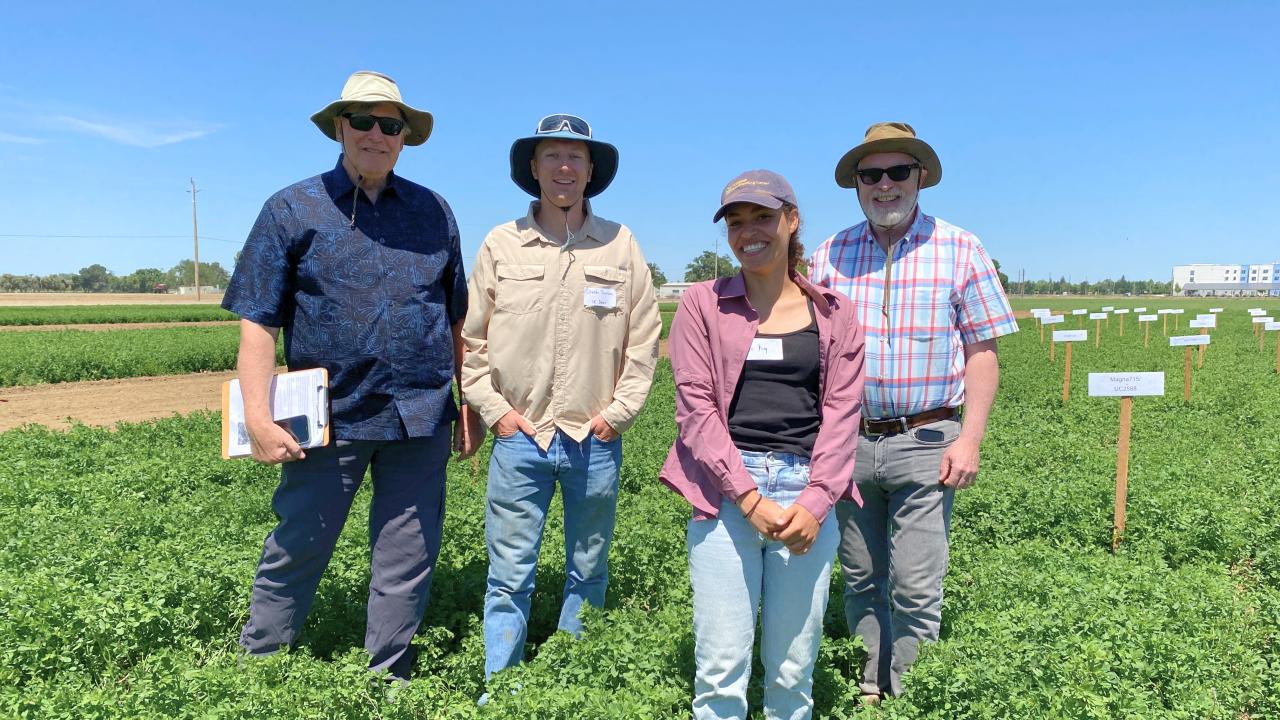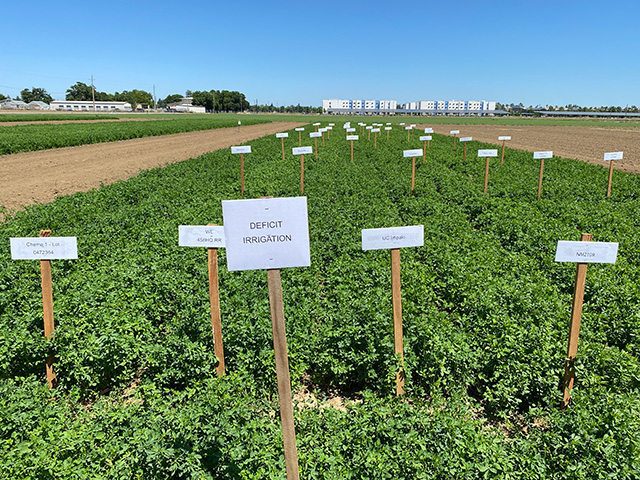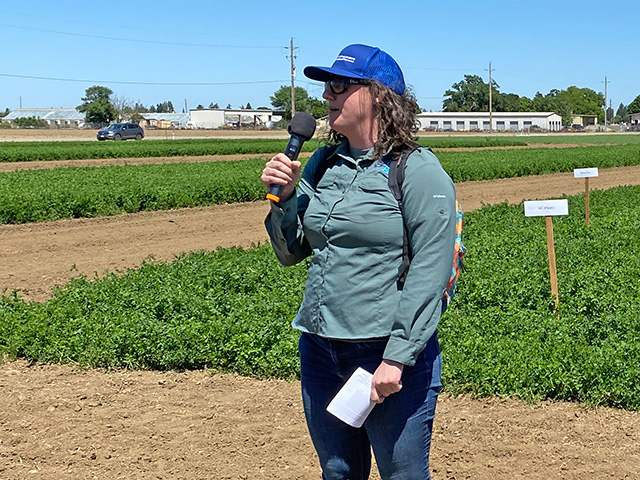
Alfalfa: Flexible amid drought and high in protein
Field Day offers insight into latest research
As growers face continued reductions in water available to irrigate crops, and while the world needs more food produced and more protein in particular, alfalfa offers an attractive option. It yields remarkedly well under reduced irrigation, and its protein can be consumed by both animals and people.
Researchers are working to answer questions and solve obstacles that remain to its wider use, visitors learned at the UC Davis Small Grains/Alfalfa Field Day held May 9. A range of topics were covered:
Producing protein directly from alfalfa

“Alfalfa is the highest-protein-producing crop in the United States on a per-acre basis,” said Dan Putnam, an alfalfa expert and professor emeritus of Cooperative Extension in the Department of Plant Sciences. “However, this protein is primarily leaf protein, compared with the protein produced in grain crops, which is easier to handle. Questions remain: Can we extract protein directly from alfalfa for human consumption as well as for animals other than cows?”
Many factors affect alfalfa’s yield and protein availability, including when it’s planted and harvested, the type of soil and when water is applied. The availability of the plant’s protein depends on who is eating it (cows have an easier time), how it’s harvested and handled and, for people, the protein extraction process.
In this research at UC Davis, researchers have planted six varieties of alfalfa to see how fall dormancy affects yield and the potential to extract protein. Samples were collected throughout 2023 and again in 2024. Scientists looked at different harvest times (from immature to more mature growth) and their effect on crude, true and soluble protein after immediate drying or liquid extraction.
Breeding addresses barriers to yield
Charlie Brummer and team explained the objectives of their plant breeding activities for alfalfa. They are experimenting with 10 varieties for potential release, with trials over several years in various locations. “The big issue has been lack of yield improvement… Why is that?” Brummer said.
Cree King discussed the on-going research to understand the basis of yield. Studies look at deficit irrigation, persistence, salinity tolerance, pest and disease resistance, plus genetic analysis to understand the basis of yield. Details are in this hand-out. King is a graduate student working with Brummer, a professor and alfalfa breeding expert, and Grey Monroe, an assistant professor with a focus on climate adaptation
Resilience to drought
While alfalfa is remarkedly resilient in times of drought, researchers are examining how different cultivars and breeding lines might respond when water is severely limited. Charles Janssen described his research to develop alfalfa with greater resilience amid highly variable water supplies. The goal is both to maximize yield under reduced water applications and to assure long-term root survival, so a drought-stricken plant can revive when water becomes available again. Details of the trials are in this hand-out. Janssen is a first-year graduate student working with Brummer and Putnam.
“We’re going have to continue to grow alfalfa under water-variable conditions,” Putnam added. He noted the severe to exceptional drought that has affected up to half of alfalfa-growing areas nationally in the past 12 years.
Yet, when partially irrigated, alfalfa still can produce good yields. That makes it a viable alternative to leaving the land fallow when water is scanty. Putnam discussed four key strategies for irrigating alfalfa amid drought, detailed in this hand-out.
Almond shells improve water infiltration

Sarah Light explained the benefits of putting almond shells on alfalfa fields: Unlike almond hulls, which are fed to dairy cows, almond shells are very high in carbon. They could improve soil carbon and soil health when applied to alfalfa fields, in addition to acting as mulch to conserve water.
In her research on farmer’s fields, Light found that yields did not differ between plots where the shells were applied and control areas with no shells. However, water infiltration improved in the plots with shells, and there was some indication of improved soil quality.
Light is a UC Cooperative Extension farm advisor in Sutter and Yuba counties. This field research was sponsored by UC Davis and UCCE Agriculture and Natural Resources; and funded by USDA-NIFA, the Alfalfa Checkoff program of the National Alfalfa and Forage Alliance, the California Alfalfa & Forage Association and donations by companies and individuals.
More resources
Get hand-outs from Small Grains/Alfalfa Field Day here.
Get more from the UC Alfalfa Research and Information Center here.
Media Resources
- Trina Kleist, UC Davis Department of Plant Sciences, tkleist@ucdavis.edu, (530) 754-6148 or (530) 601-6846
